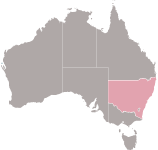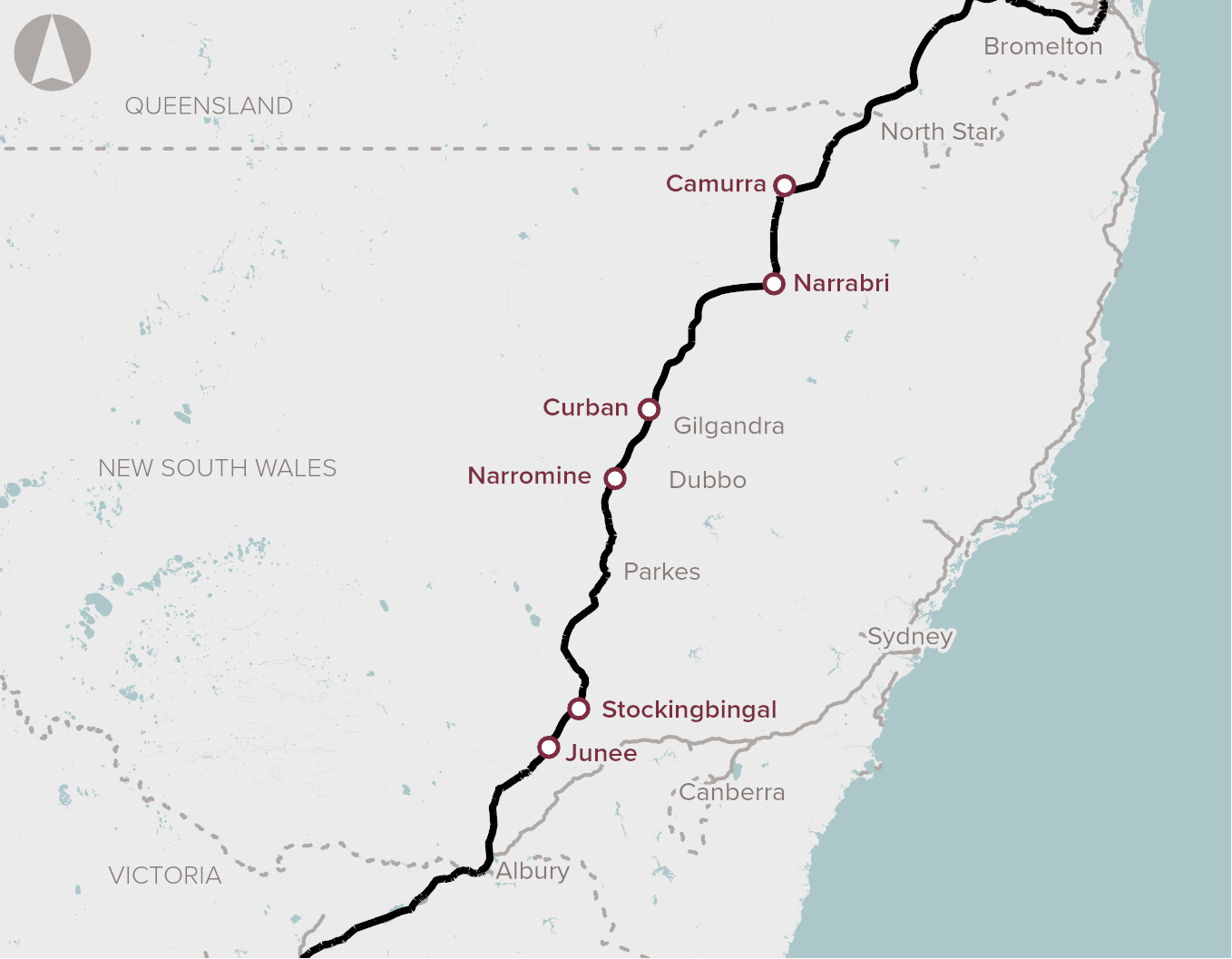

Inland Rail will connect Melbourne and Brisbane through regional Victoria, New South Wales and Queensland. In NSW, Inland Rail intersects with the Country Regional Network (CRN). Ensuring interoperability between the CRN and Inland Rail will maximise the productivity and efficiency of moving freight from regional NSW to domestic and export markets. There are two opportunities:
- Rail freight productivity – the CRN is typically built to 21 Tonne Axle Load (TAL) or below, compared to Inland Rail which will be at 25 TAL. Given the majority of regional NSW freight volumes are generated along the CRN branch lines, increasing the CRN branch lines to 25 TAL is expected to increase rail freight productivity.
- Rail freight efficiency and travel time - ensuring freight movements have direct paths to destinations and mitigating delays caused by the introduction of new junctions.
Similar opportunities may also exist in Victoria and Queensland where Inland Rail will interact with existing rail networks. Rail network enhancements are needed prior to 2027 to realise freight efficiency benefits from the first day of Inland Rail operations.
The proposal outlines potential responses at six locations which include the phased upgrade of CRN branch lines and completion of direct links between Maryvale and Gulgong, as well as the upgrade of junctions as part of the Inland Rail project delivery.
Strategic Fit
The proposal aligns to various government policy objectives and strategies, including the Inter-Governmental Agreement with the Australian Government to support the delivery of Inland Rail.
Societal Impact
Improving capacity and interoperability will increase the productivity of rail lines on the CRN, potentially enhancing the benefits of Inland Rail, and leading to greater modal shift with associated environmental and road safety benefits.
Deliverability
Further work is required to consider the requirements on each line, including the type of freight, demand between Inland Rail and other destinations, and the merits of each solution as part of the program.
Each project within the program should explore a broad range of potential solutions, how the response may be scaled to align with the expected demand, and opportunities to learn lessons between projects.
Proponent to identify and analyse potential investment options (Stage 2 of Infrastructure Australia’s Assessment Framework).
Design and planning studies have commenced, along with work to develop a Strategic Business Case. The Strategic Business Case could consider sustainability or resilience benefits to regional communities for drought and climate adaptation, safety improvements (truck removal), and emissions reduction. Future demand analysis should consider the different freight types, origins and destinations.


 EVALUATION COMPLETE
EVALUATION COMPLETE




